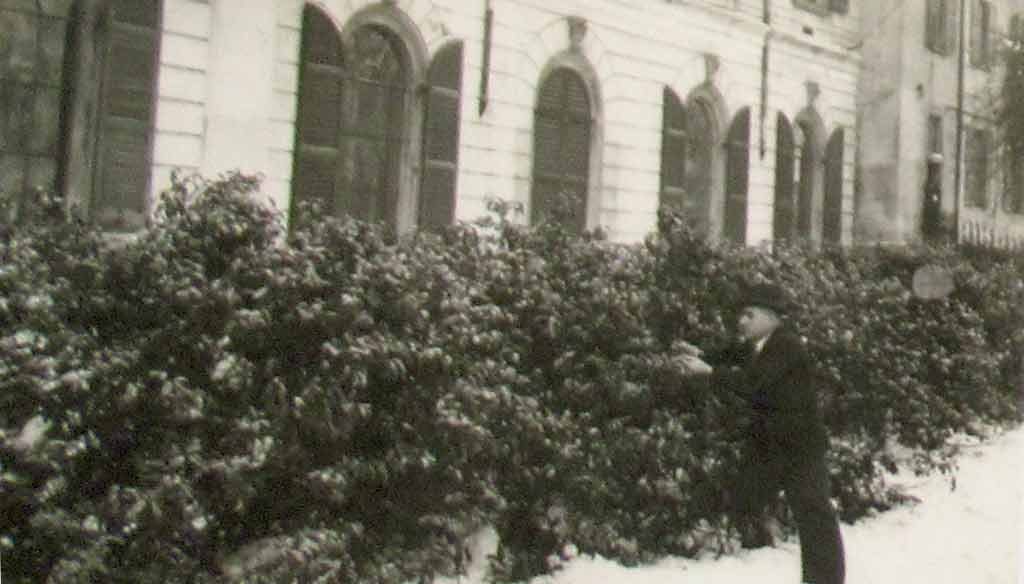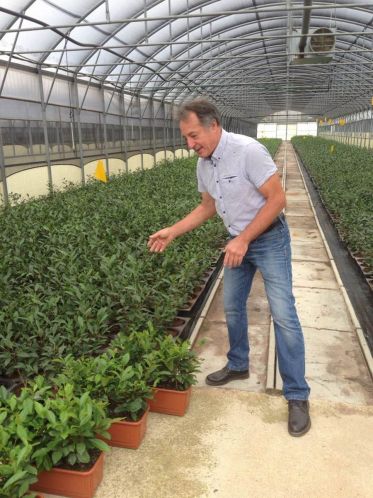Sometimes it happens people asked me about tea plantations in Italy. There are four little tea fields in our country and they’re respectively placed in Pavia, Lago Maggiore, Lucchesia area and in Sicily.
The origin of tea
People usually think that tea origini is located in India but it isn’t true: after the discover of native tea plant in Assam England started to cultivate its tea thank to the chinese labor imported by british explorers themselves. Shortly after, thanks to Robert Fortune’s activities, seeds of chinese tea plant were brought in Darjeeling only to evade the purchase from China. So the only truth is about tea origins in China.
The tea plant
Camellia sinensis is a evergreen bush coming from Theaceae group able to reach 2 meters height. Its leaves’ lenght comes from 4 to 15 centimeters while the width is around 2 or 5 centimeters.
Camellia sinensis is widely cultivated in tropical or subtropical areas own to their great temperatures between 10°C and 30°C. Plantations can take place until 2100 meters of altitude: high quality teas come often from high mountains of China or Darjeeling and Sikkim which aren’t so far from Himalaya mountain range.
The ground of tea growing can give to leaves different aromas exactly like it happens with wines: in this way every single tea is characterized by its production region. Moreover, tea leaves processing will give them more features.
When did the tea plant arrived in Italy?
First of all, speaking about tea in Italy we meet Giovanni Briosi who’s a Ferrara’s citizen born in 1846 in a family of low economic status workers: despite this he won a scolaship which allowed him to get a degree in engineering at Napoli’s university. Thanks to his Ferrara’s relationships Giovanni Briosi was introduced to agronomy and could study it thanks to another scolarship which permitted him to study farming basics in Bruxelles.
After the degree’s obtaining Giovanni moved first to Germany and then to Palermo in order to find an occupation. Thanks to his abilietes related to agronomy and biology Briosi had the opportunity of studying sicilian wines and healing plant diseases. Eventually he became a roman agronomist in 1883 winning a competition at Pavia’suniversity which permitted him to achieve the direction of the Pavia Botanical Institute where began the tea cultivation in Italy. Giovanni Briosi died in Pavia in 1919.

Historical Context
Clearly tea and history have a strong relationship so it is fundamental to know something more about the historical context. In 1914 Benito Mussolini founded the Fascio d’azione rivoluzionaria and shortly after the Fascism took place in 1921 ceasing only in 25 July 1943.
3 October 1935 was the date of Italian’s assault to Ethiopia without any declaration of war: this action was condamned by the League of Nations imposing economic sanctions to Italy concerning its import and export activities. Thanks to what happened the italian country came to autarky trying to produce whatever the nation needed to survive. Sanctions continued until 18 November 1935 but autarky stopped only on 4 July 1936 cause of Fascist regime’s political reasons. As a consequence of autarky Italy was induced to the self-production and to the sostitution of things which couldn’t be reproduced in the country:
- Tea was replaced by carcade: even if it wasn’t an italian product it came from Eritrea, an italian colonized area, and so considered like a national product. Carcade was often named as “Italian tea” because real tea was too much expansive cause of economic sanctions.
- Charcoal was replaced with Lignite.
- Wool was replaced by Lanital (wool made from caseine).
- Petrol was replaced by National fuel (petrol with 85% of alcohol).
- Coffee was accused to be health-dangerous and then replaced by barley “coffee”.
Autarky also affected the language and so every foreign word was deleted from the usage changing alien proper names in italian versions: for example my surname coming from a Piedmont valley where it was use to speak french have been changed from Volle to Vola.
Pavese (or Ticinese) Tea
What is exactly the Pavese tea? It isn’t a way to prepare tea but simply a really small tea plantation located in Pavia (Lombardia region). The phrase “Ticinese tea” comes from Ticinum that’s the latin name of Pavia and it is even used in reference to the local university: “Corriere della Sera” which is an italian newspaper talked about the matter a short time ago.
Coming back to our focus it is important to notice how Camellia sinensis had started to be studied in order to create a large-scale “sufficient tea”: first testings about it were entrused to Gino Pollacci (1872-1963) who was the Pavia Botanical Institute’s director as well as a supporter of Fascism.

Camellia sinensis plants had already been planted in a flowerbed north situated which was transformed in a greenhouse during the winter and protected by light and wind damages. In 1928 Pollacci tried to take off the green house during the cold season to check if the plants were able to resist to adverse conditions. Over the years he selected the species wich showed a low-temperatures endurance until he obtained a cultivar named ticinensis and sent it to Mussolini.
The World War II led Pollacci’s project to be abandoned and it would have been revived solely at the end of XX century by Francesco Sartori an italian professor who found Pollacci’s tea plants survived that reached 3 meters height.
Lago Maggiore Tea

The Company of Lago Maggiore grows Camellia sinensis in the village of Verbania (Piemonte region). The company’s holder Paolo Zacchera learned from a trial promoted by Pavia’s university in 1930 that it was possible to cultivate tea in the area of Premosello. So he decided to travel around the world crossing China, Japan and Turkey in order to get the know-how about tea farming and processing.
Nowadays Zacchera owns his company which is able to cover the production of 50000 tea plants: however before to spend money to buy the industrial processing equipment he needs to check the yield of his Camellia sinensis.
Meanwhile Paolo Zacchera is glad to know that Queen Elizabeth enjoyed the tea coming from plants which he gave to the scottish Wee tea company, a tea producer that won the best white tea award in 2015. If you would be interested on growing your own tea plant it is possible asking for the purchase of a little tea plant.
Lucchesia Tea

The tea plantation named Antiche Camelie della Lucchesia was born in 1987 thanks to Guido Cattolica who soaked seeds coming from Lucca’s botanical. From those seeds he has been able to select a cultivar which was given the name of Sant’Andrea di Compito and is characterized by a high endurance to low temperatures.
The plantation under consideration is roughly composed by 2500 plants located in the Antica Chiusa Borrini belonging to the village of Sant’Andrea di Compito in the province of Lucca (Toscana region). Cattolica is currently able to harvest around 15 or 16 kilograms of tea over 5 crop per year and to process it untile the final packaging. Even if it isn’t possible to buy the product you can taste it visiting his plantation.
Probably someone tried to cultivate tea in Napoli in years between 1870 and 1890 but the weather didn’t allow plants to grow up.
Here you can read about tea in Sicily. It’s an Italian article.
Translation of the Italian article written by Tea Sommelier and Tea Blogger Barbara Vola
Translated by Omar Meglioli a young Bologna University student who’s in love with tea and learning japanese language. He writes italian articles about tea in Japan in the website section named “Un tè al Sol Levante“
13 settembre 2018



Quante cose sul te ancora da scoprire. ..un mondo infinito….brava barbara…
"Mi piace""Mi piace"
Grazie mille Daniela 😀
"Mi piace""Mi piace"
Thank you very much 🙂
"Mi piace""Mi piace"